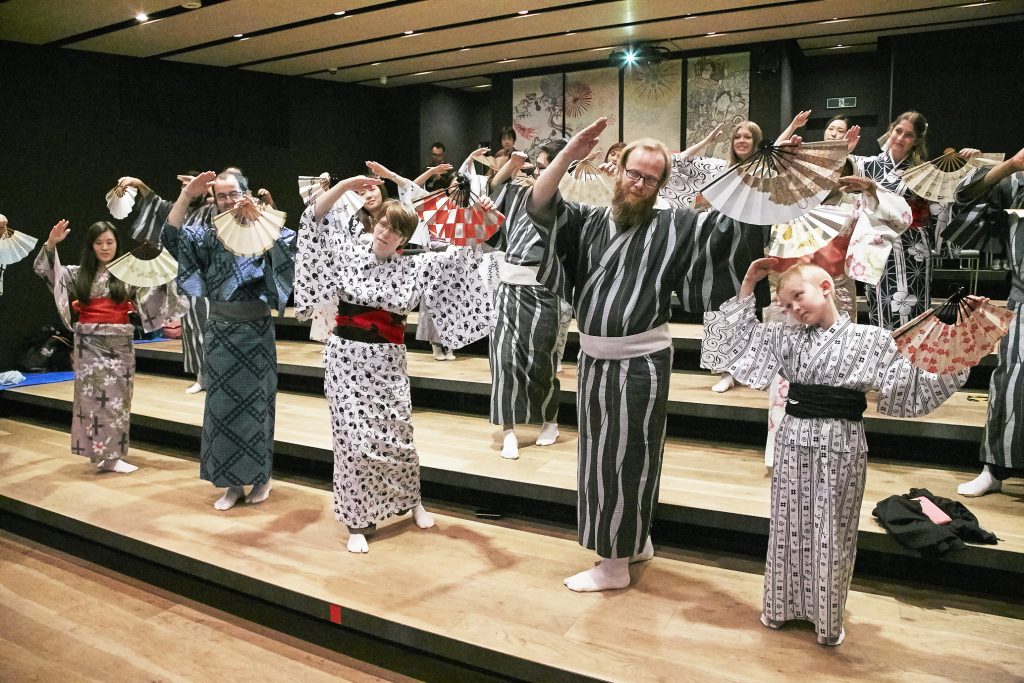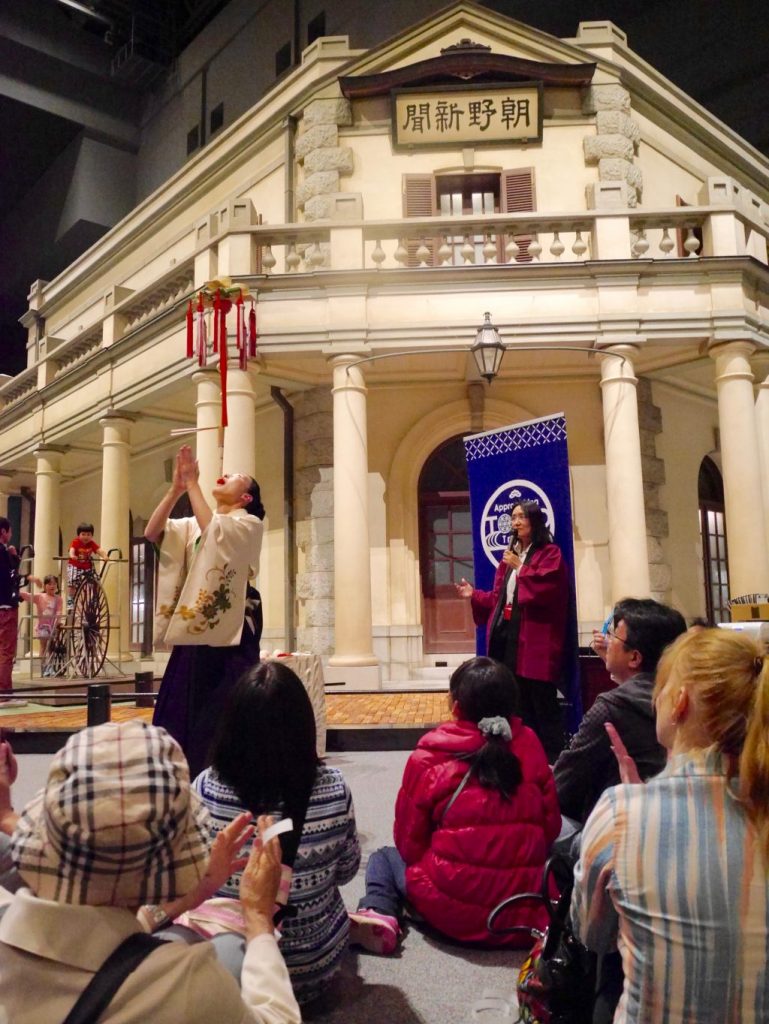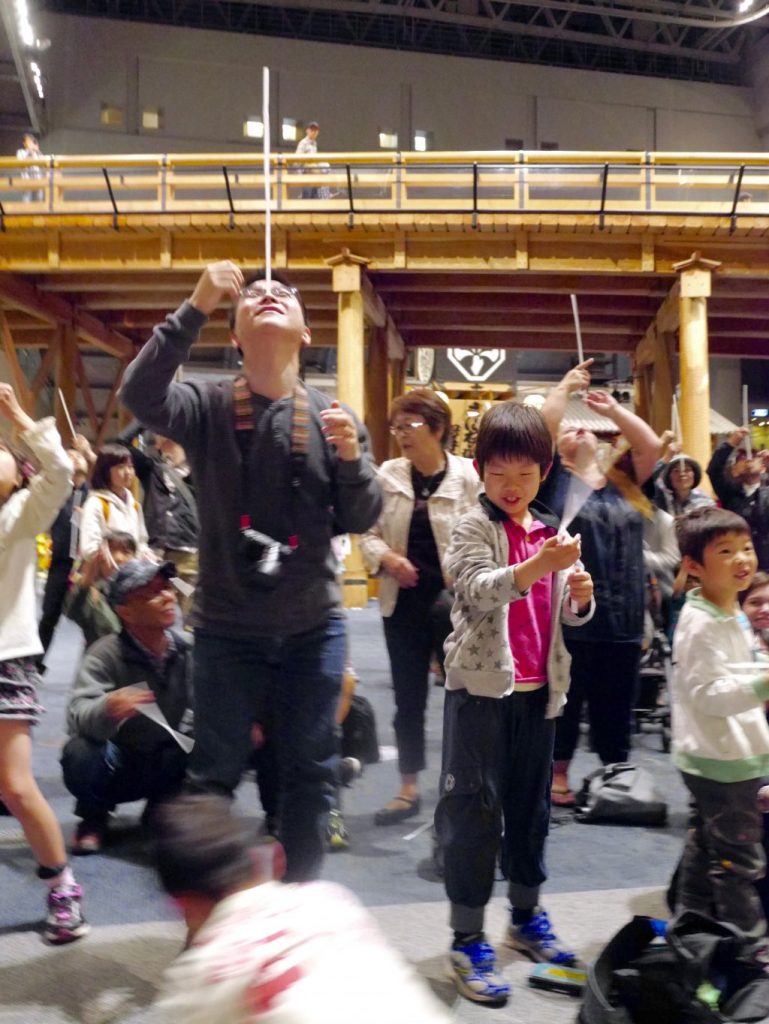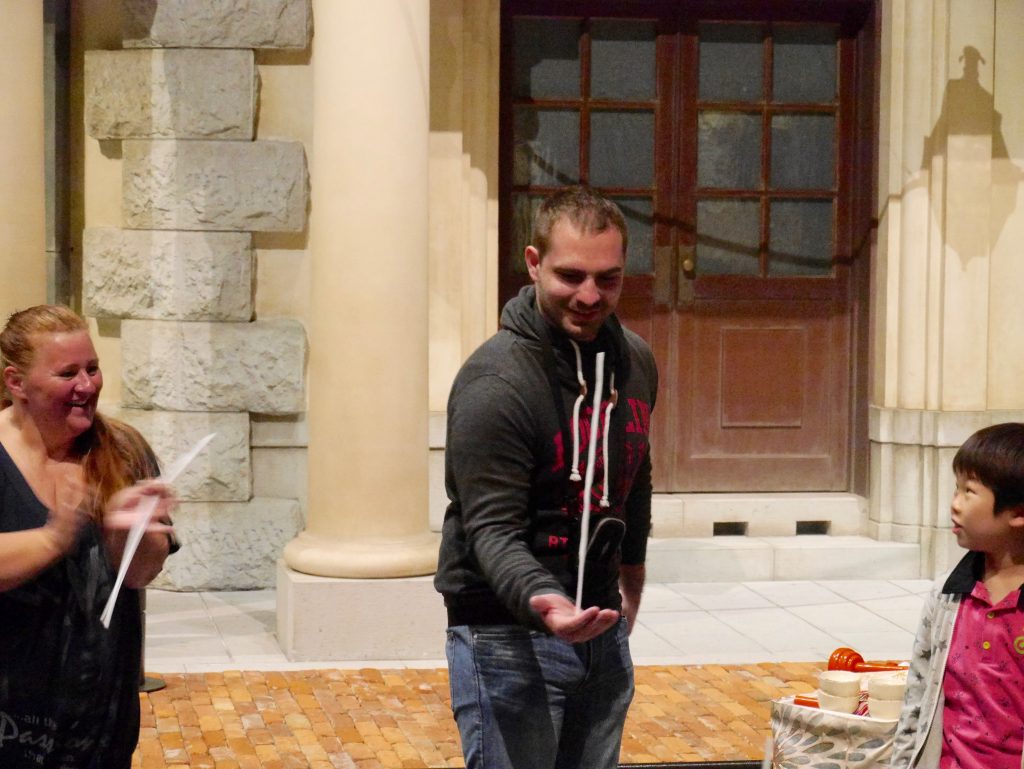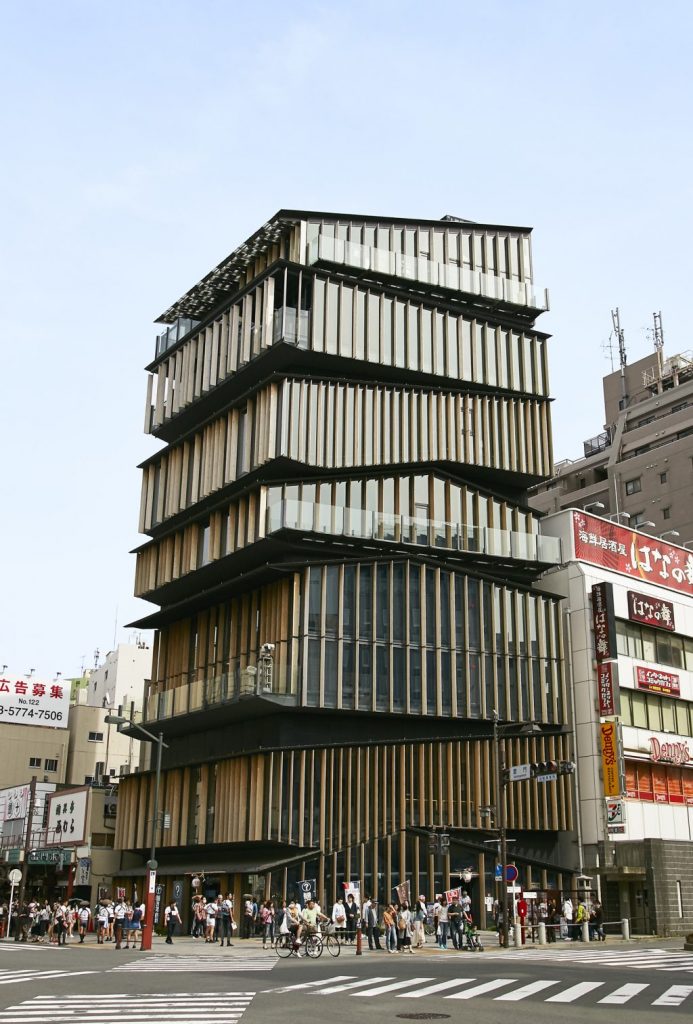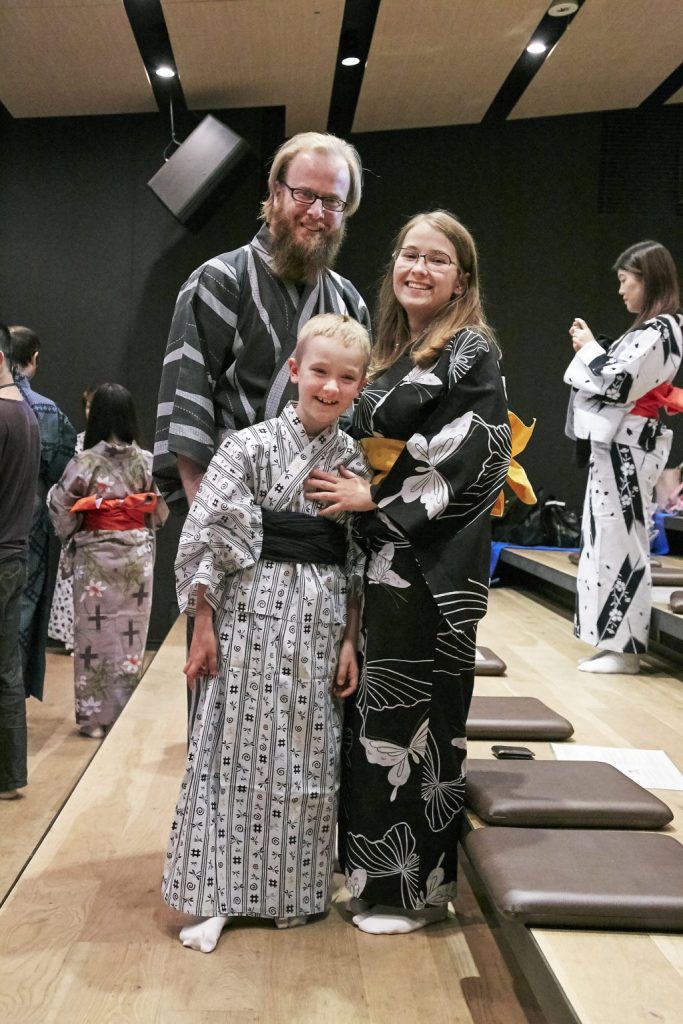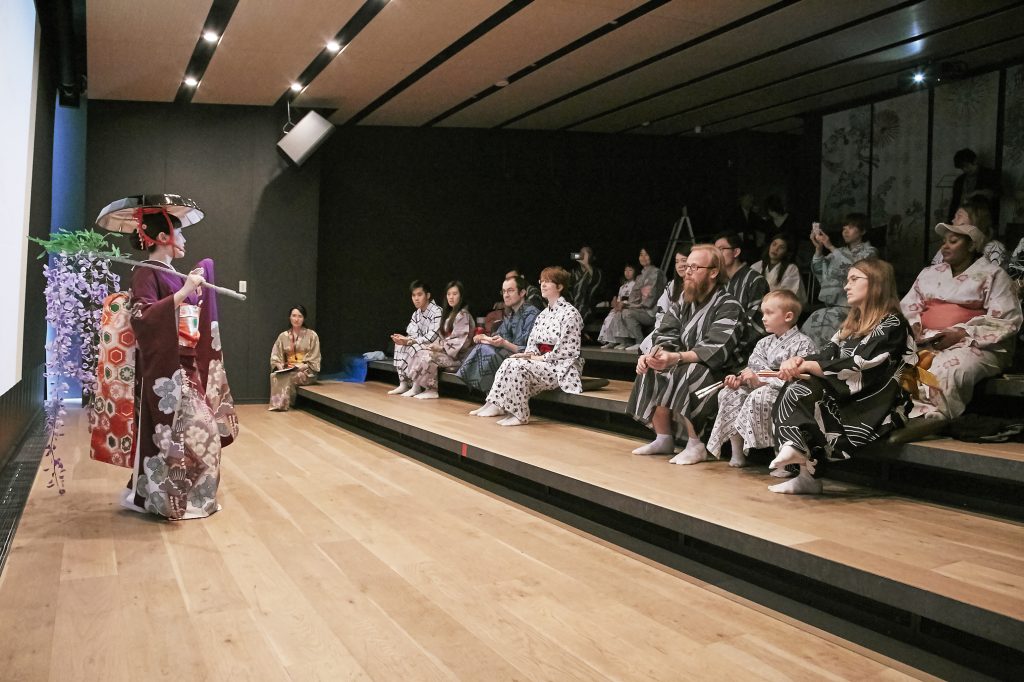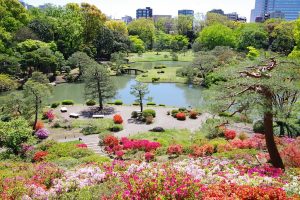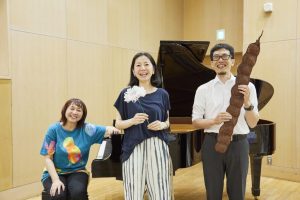For foreign visitors to Japan, the Arts Council Tokyo organizes hands-on workshops at the Tokyo Metropolitan Edo-Tokyo Museum in Tokyo’s Ryogoku (workshops on Japanese traditional entertainment on Saturdays) and at the Asakusa Culture Tourist Information Center (Japanese traditional performing arts on Sundays). Visitors can view and try authentic traditional arts directly, learning about them in a short time.
Wearing hakama, a traditional Japanese formal skirt worn over a kimono, Michiyo Kagami’s performances started with an explanation of the meaning of Daikagura.
It is reputed to have begun more than 1,000 years ago with the purpose of serving as a talisman for people, chasing away evil on behalf of the grand Shintoism shrines. Daikagura was originally a sacred and serious performance. The Shishimai lion dance, also performed to expel bad luck, may be a bit more familiar.
Japanese people can easily relate it to religious roles. However, foreigners especially from the West see it as a form of juggling, rather than a religious ritual. So, she explained simply, saying as you smile, good luck will come.
Gokai Chawan or five-storey building builds a tower using sticks, two balls, teacups on a board, while she holds the arrangement in her mouth.
The visitors gave a big round of applause.
All the visitors were given a thin paper tape. They were requested to fold it vertically, and put it on their chin and keep there as long as possible. This is called kamitate, or standing paper.
To keep it straight, visitors moved back and forth. The key point is to be able to see the top of the paper tape. Three volunteers out of all the visitors took part in the competition. David from Hungary, who was in Tokyo with his friends for the first time, was the winner. They joined this program and thought they were very lucky because it was a very rare chance to enjoy an authentic traditional program first-hand.
Visitors enjoyed performances by Michiyo during the 30-minute program.


